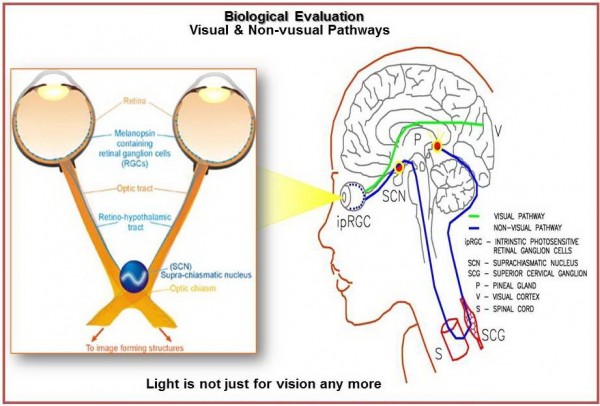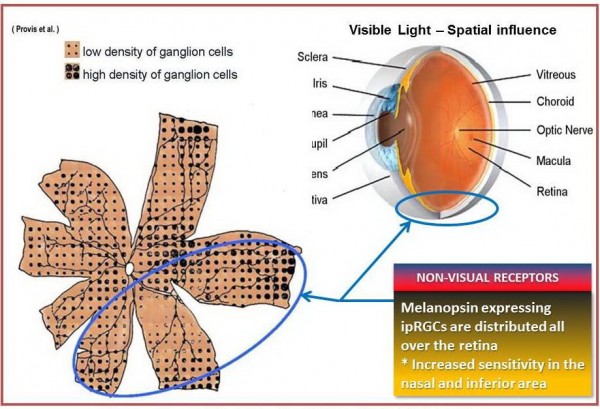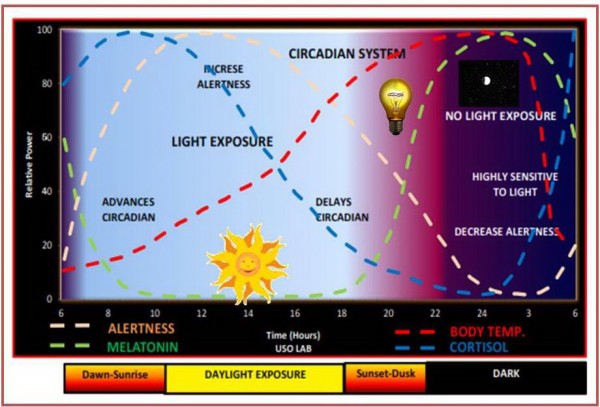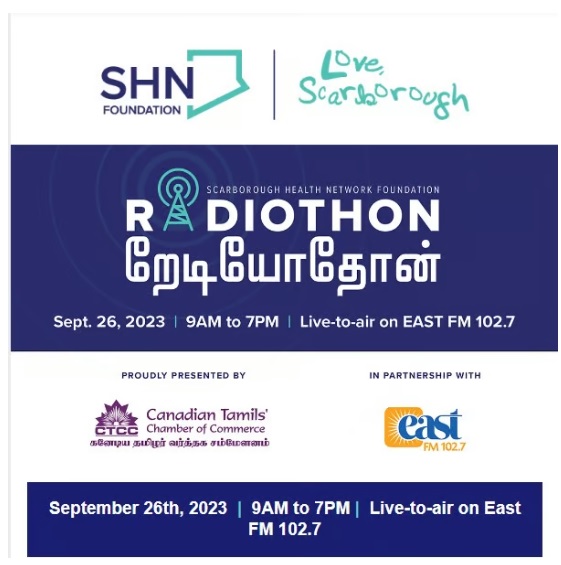By: Uthayan Thurairajah
Lighting is closely related to human emotion. ??According to the global health research statistics from World Health Organization, sub-health is now a common issue all over the world. ??Lots of factors can create sub-health problems; one of the factors is regularly working under inappropriate lighting environment.?? Artificial lighting should not only conduct illumination function, but also fulfil the physical, mental and emotional needs.?? The development of Solid-State lighting (LED) technology makes this all become possible.
The recent research has greatly advanced the understanding that light not only enables vision, but is also a critical signal to our biological systems, affecting circadian rhythms, pupillary response, alertness, and more. However, applying early research ???ndings to widespread lighting practices must be done with great caution. ??After all, light as a drug is much different from light as a commodity.
We have to make an informed approach when attempting to translate scienti???c studies to engineering practice.?? Lighting design in the Melanopsin Era should include the current state of knowledge on nonvisual photoreception and how it can be applied in the ???eld today.?? Humans are exposed to a substantial amount of electric lighting, all of which has some effect on our physiology.?? The uncertainty surrounds the role of LEDs and its quick rise in the lighting world as well as the outlook for its future.?? There is greater ability to modify LED lighting systems to meet visual and non- visual needs, which is presenting many new opportunities.?? At the same time, there is potential for poorly engineered or implemented lighting systems to cause harm.
New Era and Limitations
The non-image-forming response to light is wide ranging, including circadian, neuroendocrine, pupillary, behavioral, and other physiological effects. ??Speci???c outcomes include the daily resetting of circadian clocks as well as acute effects like pupil constriction, increasing alertness, and melatonin suppression.
Light has been shown to be an effective clinical treatment for a variety of conditions, such as Seasonal Affective Disorder (SAD), but also plays an important role in maintaining daily physiological function.?? Importantly, the non-image-forming photoreceptor system in our eyes is different from our visual system. This is one of the reasons traditional measures of lighting quantity, such as illuminance, do not accurately quantify the nonvisual effect of a lighting stimulus.
The intrinsically photosensitive retinal ganglion cells (ipRGCs) were identi???ed as was the spectral sensitivity of melanopsin. ??The ipRGCs have peak sensitivity to blue light but the total response of the nonvisual photoreceptive system is a composite of input from the ipRGCs, rod photoreceptors, and cone photoreceptors.?? This composite response can change based on the spectrum, intensity, and temporal pattern of the light, as well as the light-exposure history and circadian adaptation state of the individual.
LEDs came to prominence just as knowledge of nonvisual photoreception was emerging, and the rates of adoption suggest that LEDs will soon be in widespread use in all applications.?? This combination has provided an opportunity to develop and evaluate best practices for nonvisual stimulation.?? Additionally, LEDs offer superior ???exibility in terms of spectrum, intensity, directionality, and controllability, compared to most conventional light sources, and all of these characteristics are important factors in designing a system for nonvisual impact???particularly the ability to tune LED spectrum.
Most LED light sources have a blue ???pump??? (around 450nm) that may result in more energy per unit illuminance at a speci???c wavelength. Photoreceptors do not process individual wavelengths but integrate information over a range of wavelengths. ??LEDs are not naturally more hazardous to human health than any other light source.?? It is also important to recognize that LED can be engineered to emit light at any desired CCT, which can offer greater ???exibility for changing nonvisual ef???cacy based on the time of day. ??The challenge is identifying exactly what spectral content is the most bene???cial, which is quite possible application, time-of-day, and user dependent.
What may be bene???cial for an occupant during the day may be harmful for an occupant at night, and may vary signi???cantly between individuals in a given space. ??Even more complicated is the need to balance the desire for alertness with protection of normal circadian rhythms among night-shift medical staff. Therefore, even if a prescription for effective nonvisual stimulation is developed, implementing the solution may not be straightforward, especially if there are users with different histories and needs occupying the space at the same time.
The lighting practitioners may choose to follow some basic guidance: if minimizing nonvisual response is a goal, the amount of light reaching the eye???especially short-wavelength radiation???should be limited; if activating nonvisual responses is a goal, increasing short-wavelength radiation and total illuminance levels at the eye should be the focus.?? Understanding when to apply each scenario should be the role and responsibility of the lighting designer. There are many details to be considered, but few de???nitive answers to important questions about the effect of light level, spectrum, or otherwise customized solutions on different users.
Future Development
It is dif???cult to say exactly where things are in the development of understanding nonvisual photoreception, but it is likely that numerous theories that exist today will continue to be re???ned. ??While the science may still be building, the lighting industry is already seeing LED products marketed for their health bene???ts. This is not unique to the technology though, as ???full-spectrum??? incandescent and ???uorescent lamps have been marketed for decades, but there is unprecedented momentum to address light and health thanks to the customizability of LEDs. ??Lighting Designers and consumers must understand that no lighting product is a solution; in fact, any bene???t derived is dependent on the proper use of the product. Further, it is possible that no bene???t is achieved, or worse, that harm is done. Like many health questions, there is no easy answer. One thing is for certain, however: the lighting industry cannot ignore nonvisual needs inde???nitely.
Conclusion
Thanks to recent scienti???c advancement, it is clear that non-visual needs should also be considered, but there remains much to be discovered before widespread implementation of nonvisual-effective solutions is possible. While today???s LEDs are generally no more bene???cial or dangerous to human health than other, similar light sources, they have the potential to be carefully tuned to meet the diversifying demands placed on lighting systems.
Uthayan Thurairajah is member of several Canadian and international professional association. He sits on various committees that set National Lighting Standards and are in the forefront of lighting science and technology.?? He continue paly major role in the development and implementation of ideas that influence both global and local lighting standards.?? Uthayan is a Philip University certified LED Professional who has been doing a lot of research about the LED technology.?? Given that he is putting tremendous time and effort into understanding this issue, he is a huge fan of LED technology.?? He has a clear understanding and knowledge to accelerate the acceptance of LED technology as well as surpass the LED misconception that we have in our society related to light pollution and health.?? He has very good knowledge of LED technology, smart and adaptive control system for roadway & parking lot and garage lighting.??
(This article will appear in Feb 2015 print issue of Monsoon Journal)
















